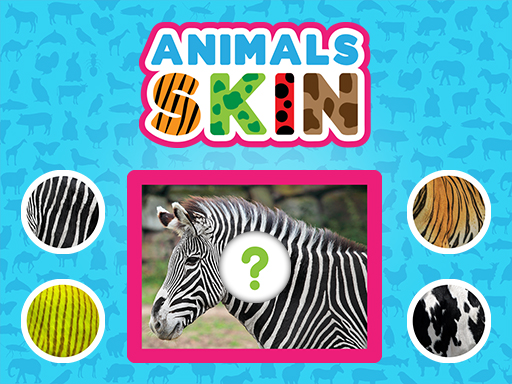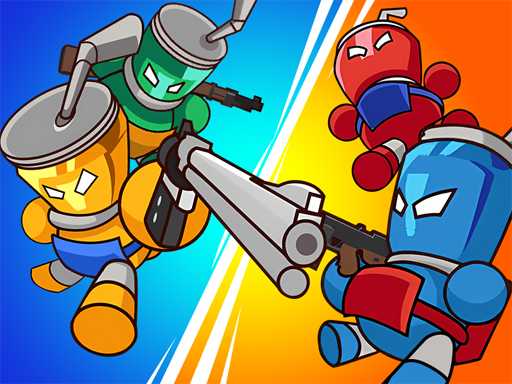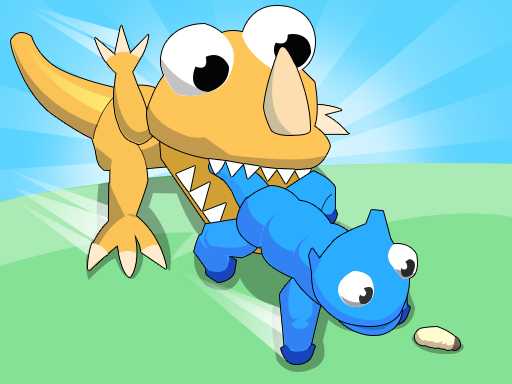
Animals Skin: The Ultimate Guide for Young Explorers 🐾✨
Meet the Magical World of Animal Skins
Discovering the Game
Have you ever noticed how fascinating animal textures can be? The way a cheetah’s spots flow over its sleek body, or how a zebra’s stripes align perfectly, is nothing short of art. Animals Skin brings this wonder to life in an interactive, playful way, perfect for curious little explorers. Developed by Nau.kids, this game invites children (and their parents!) to drag missing skin pieces to complete vibrant animal images.
The beauty of Animals Skin lies in its simplicity and educational value. It isn’t just about matching colors or shapes—it’s about observing patterns, understanding textures, and forming early scientific curiosity. Imagine your child giggling while placing the perfect patch of tiger stripes, or thoughtfully comparing the roughness of a rhinoceros’s hide to the softness of a rabbit’s fur. These micro-moments of learning are what make the game stand out.
And the best part? It’s accessible across multiple platforms: play on mobile, tablet, or computer. That flexibility means learning can happen in the car, at home, or even while waiting for a pizza delivery (we won’t judge!).
Transitioning from the introduction, let’s dive deeper into how the game actually works—because understanding the mechanics is half the fun.
Game Mechanics: How Animals Skin Works
Simple Controls for Big Fun
Here’s where the magic starts. Animals Skin uses a drag-and-drop mechanic, which is intuitive enough for young hands yet satisfying for anyone with a love of puzzles. Each level presents a partially completed animal, and the player’s goal is to drag the correct skin piece into place.
A small tip: encourage children to observe first, then act. Pausing to notice patterns, colors, and textures can improve not just game performance but also critical thinking skills. For adults supervising, it’s a delightful chance to ask playful questions: “Hmm, do you think this elephant skin piece is soft or rough?”
Objectives That Teach
Unlike games that simply reward speed, Animals Skin rewards accuracy and observation. Completing a full animal unlocks cheerful animations and subtle sound effects—a digital “high-five” that motivates players without overstimulation. It’s a fine balance of challenge and reward that helps kids learn while having fun.
If you’re thinking about educational benefits, the game subtly teaches:
- Pattern recognition
- Hand-eye coordination
- Attention to detail
- Early zoological knowledge
Next, we’ll explore step-by-step strategies to maximize both learning and fun, whether you’re a child or a parent guiding the adventure.
Step-by-Step Strategies: Winning Without Losing the Fun
For Young Players
Step one: Take your time. It’s tempting to rush, but observing every detail is half the thrill. Step two: Match colors first. Bright patches often give away the correct placement. Step three: Rotate and test. Some skins might fit more than one spot—experimenting helps develop problem-solving skills.
Mini anecdote: My niece once insisted a zebra’s stripes were upside-down. After some giggles and gentle guidance, she realized that observation and patience beat guessing every time.
For Parents and Guides
- Ask open-ended questions like, “What texture do you think this animal has?”
- Celebrate effort, not just completion.
- Encourage comparisons across animals to spark curiosity (e.g., “How does this lion’s mane differ from a sheep’s wool?”).
Here’s a handy table of key strategies to keep players engaged:
| Player Type | Strategy Tip | Fun Bonus |
|---|---|---|
| Young Player | Observe patterns carefully | Unlocks surprise animations |
| Parent/Guide | Ask guiding questions, not give answers | Strengthens learning moments |
| Both Together | Compare textures and discuss animals | Creates bonding and laughter |
With these strategies, the game transforms from a simple puzzle into a shared learning adventure. Next, let’s explore how to maximize fun and learning simultaneously.
Maximizing Fun and Learning
Tips to Keep Players Engaged
Have you noticed how some kids lose interest quickly? The trick is balance. Short sessions, combined with small victories, keep the brain engaged without fatigue. Another tip: mix animals of different difficulty levels. Start with familiar animals like dogs and cats, then progress to exotic creatures like pangolins or okapis—watch curiosity spark!
- Rotate devices to encourage versatility (tablet, phone, computer)
- Use sound cues for feedback
- Celebrate textures: “This tiger stripe is so smooth!”
Learning Beyond the Game
Animals Skin isn’t just play—it’s early education in disguise. Children develop fine motor skills, observational skills, and basic zoological knowledge. For extra enrichment, parents can reference resources like National Geographic Kids to learn fun facts about each animal. Imagine finishing a level and then reading a fact about the animal’s habitat or diet—instant learning boost!
Transitioning naturally, let’s now dive into emotional storytelling and interactive engagement, where the game truly shines.
Emotional Storytelling and Interactive Engagement
Why Stories Make Learning Stick
Ever seen a child gasp when a cheetah’s spots magically complete on the screen? That little “wow” moment is pure emotional engagement. Storytelling in Animals Skin happens organically: each animal is a character with its own textures, quirks, and charm.
Mini-dialogue example:
“Why is this rhino so bumpy?”
“Maybe it’s because he’s been rolling in mud all day!”
Laughs and curiosity explode simultaneously.
Interactive Questions to Spark Reflection
- “Which animal would you pet if it were real?”
- “What would you do if you were a zebra hiding in the grass?”
- “How do you think a kangaroo’s fur feels?”
Such questions turn screen time into meaningful reflection. For kids, this encourages empathy and imagination. For parents, it’s a chance to observe thought processes and encourage critical thinking.
The next section focuses on platform access and additional resources, ensuring the game is always available for playful learning.
Platforms and Accessibility
Where You Can Play
Animals Skin is wonderfully versatile:
- Mobile: iOS and Android
- Tablet: Touchscreen makes dragging intuitive
- Computer: Mouse-based play perfect for older kids
This flexibility ensures learning can happen anywhere: waiting rooms, long car rides, or cozy reading nooks at home.
Additional Resources
For parents looking to expand the experience, consider:
- Wikipedia pages for each animal
- Khan Academy’s zoology sections for older learners
- Educational YouTube videos demonstrating real animal textures
Having these resources at hand enriches the game’s educational depth and keeps curiosity alive beyond the screen.
Next, we’ll wrap up with key takeaways, bonus tips, and social sharing strategies.
Key Takeaways, Bonus Tips, and Social Sharing
Quick Reference Tips
- Observe first, drag later
- Rotate through device types
- Celebrate every success
- Introduce new animals gradually
- Encourage discussion about textures and habitats
Final Thoughts
Animals Skin is more than just a game; it’s a bridge between play and learning, observation and imagination, parent and child. With its intuitive controls, educational focus, and emotionally engaging content, it offers countless “aha” moments for young explorers. So, the next time a child drags a patch of giraffe skin perfectly into place, remember—they’re not just playing; they’re learning, experimenting, and laughing along the way. And that’s the ultimate win.
For Your Social
If you’re proud of your child’s animal accomplishments, why not share the fun? Here are some hashtags:
- #AnimalsSkinGame
- #KidsLearningThroughPlay
- #FunWithTextures
- #YoungExplorers
- #EducationalGaming
Sharing moments online can inspire other parents and educators to explore the game as well.




